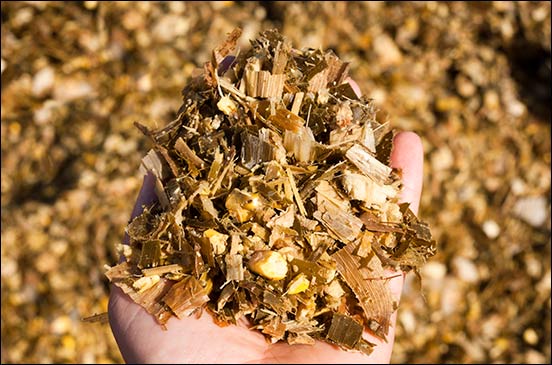
Establishing Corn Silage Value
Tips to calculate corn silage value without published market prices.
Corn silage represents the base of many beef and dairy diets in the Midwest for a number of very good reasons. Properly harvested corn silage is an excellent forage resource that can be used in a number of feeding situations. A large quantity of feed can be harvested from a relatively small land area in a short period of time, especially with modern corn genetics and silage-harvesting equipment. However, assigning accurate values to corn silage can be challenging as there are few if any published market prices.
There are two basic approaches to pricing corn silage; either valuing corn silage based on the cash corn market, or based on nutrient composition compared to some other feedstuff.
Valuing corn silage based on corn prices
A common rule of thumb to determine corn silage value has been to multiply the cash price of corn by 10 and use that value as the price per ton of corn silage in the bunker. Although this method is quick and easy, it relies on assumptions that may not be true for every situation. A more precise tool is often called for, especially when negotiating a fair value for corn silage between two parties.
Jack Davis, South Dakota State University (SDSU) Extension crops business management field specialist, has developed a spreadsheet tool to help producers estimate silage values more accurately. Corn silage value is estimated using the estimated yield and price of corn, expected harvest costs for both silage and grain, the value of the stover either in the field or baled, as well as estimated silage dry matter and shrink losses. Example corn silage values are shown in Table 1.
| Table 1: Corn silage values based on corn price | |
| Corn price, $/bushel | $3.15 |
| Estimated corn yield | 150 bushels |
| Estimated silage yield | 20.2 tons |
| Corn silage dry matter | 35% |
| Corn grain harvest expense, $/acre | $50.00 |
| Net value of stover, $/ton stover | $25 |
| Corn silage value, standing in field, $/ton | $24.99 |
| Estimated silage harvest cost, $/ton | $5.56 |
| Shrink loss | 10% |
| Corn silage value at feeding, $/ton | $33.04 |
Estimating silage value based on other feedstuffs
In some instances comparing the value of corn silage to some other feedstuff is more useful. The most appropriate way to make this comparison is to compare feedstuffs based on the cost of nutrients on a dry-matter (DM) basis. The example in Table 2 shows the estimated value of corn silage when compared to a 30:70 blend (DM basis) of wet distillers’ grains with solubles (WDGS) and wheat straw for net energy and protein using the SDSU Extension Feed Cost Calculator Tool.
| Table 2: Estimated values for corn silage compared to WDGS and wheat straw | ||
| Corn Silage | WDGS:straw (30:70 DM basis) | Cost per ton, as fed | $33 | $48 |
| Percent dry matter | 35% | 59% |
| Net energy for maintenance (NEm), Mcal/lb. | 0.75 | 0.60 |
| Net energy for gain (NE>g), Mcal/lb. | 0.47 | 0.23 |
| Net energy for lactation (NEl), Mcal/lb. | 0.74 | 0.59 |
| Percent crude protein | 9% | 11.5% | Equivalent value for corn silage, $/ton |
| Crude protein basis | $22.28 | |
| NEm basis | $35.59 | |
| NEg basis | $58.19 | |
| NEl basis | $35.71 | |
Other considerations
As with any pricing decision, individual circumstances can have a great deal of influence over the final value. For instance a dairy or feedlot might be willing to apply manure on the fields that were chopped for silage. That would compensate for the organic matter contained in the stover and could change what would be an acceptable price for silage in the field. Other factors such as local feed supply and demand, availability of other feed or harvest options, and logistical details such as trucking expenses need to be considered to determine a silage price that works for all parties.
Editor’s Note: Warren Rusche is a cow-calf specialist for SDSU Extension. This article is reprinted with permission courtesy of http://iGrow.org.






